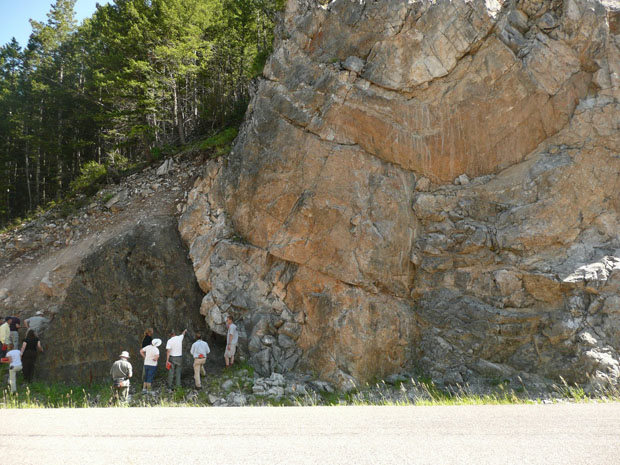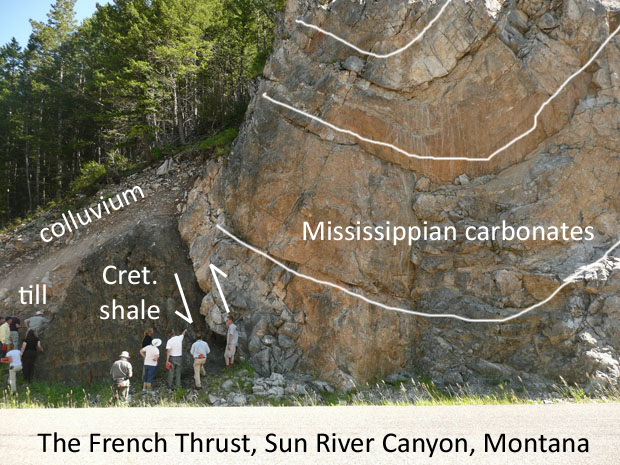That title sounds kinky, right? Well, calm down.
I’m behind the curve on the latest Accretionary Wedge (as I was for the one before that), but here’s a quick image to join the parade of geologic photos that Ann is hosting. While it’s not my favorite, it’s definitely a favorite, more by virtue of the geology it shows than the aesthetic qualities of the image:

That is an outcrop of the French Thrust, one of many imbricate thrust faults exposed in Sun River Canyon, Montana, just west of Augusta. The light colored rock at right is limestone and dolostone of Mississippian age, and the dark rock at the lower left is shale of Cretaceous age (deposited in the Western Interior Seaway). Beyond that, to the very far left, you can see some lighter-colored, poorly-sorted material. That’s Pleistocene glacial till, and both the shale and the till are capped by a sloping layer of colluvium, tumbling down from higher elevations. The contact between the shale and the dolostone is a thrust fault. Half a mile downstream there is another. Half a mile upstream there is another. There are a lot of them exposed in Sun River Canyon, and the Canyon cuts across strike of all of them. Note the syncline in the Mississippian carbonates, and the differential weathering of the carbonate (tough, proud) as compared to the shale (weak, depressed). Here’s an annotated version of the photo:

The Sun River Canyon is an unparalleled location in my experience for gorgeous scenery, great weather, a minimum of people, a healthy population of great gray owls, and exceptional exposures of an imbricate stack of thrust sheets. Check out this old post I put up at Pathological Geomorphology for more details about the area.

Thank you, Callan! Thank you for making the Accretionary Wedge such a success, and for all of your support with getting the parade rolling.